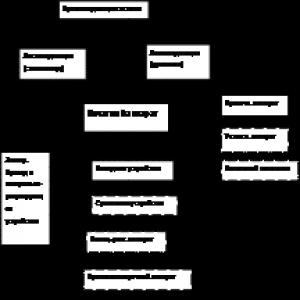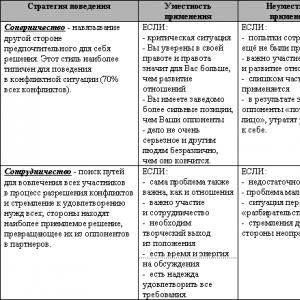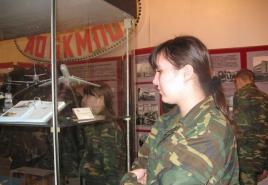Muscovy and other wild pigs. Muscovy pig is a baker
See BAKERS. Dictionary of foreign words included in the Russian language. Pavlenkov F., 1907. MUSK PIG or BAKERS See this word. Dictionary of foreign words included in the Russian language. Chudinov A.N., 1910 ...
Muscovy duck ... Wikipedia
Domestic pig Sow with five piglets Scientific classification Kingdom: Animals Type: Chordates Class ... Wikipedia
This term has other meanings, see Pig (meanings). ? Domestic pig ... Wikipedia
MUSK PIG or BAKERS See this word. Dictionary of foreign words included in the Russian language. Chudinov A.N., 1910. BAKERS Muscovy pig in South America. Explanation of 25,000 foreign words that have come into use in the Russian language, with ... ... Dictionary of foreign words of the Russian language
Exist., number of synonyms: 5 apua (3) animal (277) musky pig (1) ... Synonym dictionary
Mammal artiodactyl animal living in herds in America; resembles a wild boar and has a gland on the sacrum that secretes an odorous substance, which is why such a musky pig is called. Dictionary of foreign words included in the Russian language. ... ... Dictionary of foreign words of the Russian language
Muscovy duck Domestic musky ducks are often called indo-ducks, apparently mistakenly believing that they were obtained by crossing turkeys and ducks Scientific classification ... Wikipedia
Otherwise, musk pigs are called bakers. Initially, they were attributed to the pig family. However, the musk pig has little in common with ordinary hogs. Now these pigs are classified as a family of peccaries - non-ruminant artiodactyl mammals.
Muscovy pig - where does the name come from
A gland with a musky-like secret is located on the back of animals (in its posterior half). Animals, raising their bristles over the gland, forcefully vomit a terribly smelling secret, marking their habitat. Because of this terrible smell, the musky pig got its name.
Characteristic features
Bakers have significant distinguishing features that distinguish them from ordinary pigs. According to its characteristics, the musky pig is a non-ruminant ungulate. There are three sections in her stomach. The anterior one is formed by 2 sausage-shaped blind sacs.
The hind legs have three toes instead of four. The direction of the upper powerful trihedral, very long (contacting with the lower) fangs is the same as that of predators - down. The jaw is filled with thirty-eight teeth. Any musky pig is smaller than true boars. The weight of animals varies from 16 to 30 kg, the maximum height is 57 cm, and the length does not exceed 100 cm.
In appearance, individuals resemble ordinary pigs. They have a large wedge-shaped head, a short neck, tiny eyes, and slightly rounded ears. Their body is covered with thick bristles. She, elongated at the neck, nape and back, forms a beautiful mane. The animal has a short tail, hidden in the bristles, stands on thin short legs.
habits
Cautious animal - the musky pig hears excellently, due to which it practically does not fall into the field of view of a person. Rather, you can hear the characteristic clicking of teeth and the stomp of fleeing individuals, rather than themselves.

Pigs feed on herbaceous plants, fruits, roots and bulbs. They are relatively little interested in living creatures, although they may well have a snack on insects, lizards, small animals and even carrion. During dry periods, they prefer to eat succulent plants, such as prickly pear or agave.
habitats
The distribution area captures the southwestern United States and deepens into Central Argentina. Both dry steppes and tropical forests are suitable for dwelling musk pigs. Animals, huddled in herds, actively feed at night, and during the day they settle down on the beds.
A natural threat to peccary habitats is jaguars and cougars. Coyotes also dare to attack the young. Mothers, driven by instinct, vigorously protect their young. Attacking predators, they inflict bites on them, refraining, unlike a pig, from blows with fangs. Enraged and frightened animals characteristically click their fangs.
reproduction
In the place where the herd left droppings, a lot of mounds of excrement are formed. Females are ready for mating at 8-8.5 months, and males at 11-11.5 months. There is no specific mating period for peccaries. However, young growth, as a rule, appears in July - August, following the rainy season and the rapid growth of greenery.

The gestation period ranges from 142-149 days. An individual that has felt the approach of childbirth is removed from the herd to a secluded place. Often, childbirth occurs in a hole. There are usually 2 piglets in a litter, but 3 or 4 gilts are rare. For the most part, the musk pig brings single-sex piglets (only 20% fall on the birth of heterosexual young animals).
The very next day, the babies with their mother join the herd, they feed on milk in a standing position (a couple more differences from real boars). Milk in females flows only into the two rear pairs of nipples. Piglets begin to eat adult food, having lived up to 6-8 weeks.
Types of musk pigs
Peccaries are represented by two subfamilies and twenty genera. There are four modern types of musk pigs - these are the white-bearded, chaksky, giant and collared peccary.
Despite the domestication of animals, there are still many wild pig breeds, among which the musk pig stands out. In another way, it is called bakers. These savages are classified as non-ruminant ungulates. But there are other forest boars that attract the attention of people, so much so that they try to keep them at home. Growing such breeds has its positive and negative points. We will talk about this in the article.
Brief historical background
Hunters go into the forest with the specific goal of making a wild pig or boar their prey. The meat of these animals is tough, but tastes better than domestic pork.
Wild piglets are considered the ancestors of classic domestic pigs. According to historical data, they managed to tame them more than 7 thousand years ago. Surprisingly, the dog was the first domesticated animal, and the pig was the second.
Outwardly, the wild relative of the pig is very different from the domestic relative. The head of the animal is longer, and the body, on the contrary, is shorter. The legs are stronger, more stable, and the ears are bigger. The boar has frightening fangs, the length of which can reach 20 cm. The size of an adult male is really impressive - weight is in the range of 150-200 kg, with a body length of over 150 cm.
At the same time, animals have an aggressive character. And often the breeding of wild boars is complicated by the fact that the owners are afraid of their own pets. The wild forest pig is especially dangerous during the rut and in the presence of offspring. At such a time, not only males, but also females can attack.
The taste of domestic pig ancestor meat is more intense and fragrant. The meat of a young piglet, which has a delicate pink color, is especially valued.
Common features of all savages
Wild pigs still live today in different parts of the world, mostly in forests. Depending on the habitat, they have a characteristic appearance. But there are also common features:
- large size and powerful build;
- long fangs (20 cm);
- thick hard bristles;
- color - black, yellow, gray with all sorts of shades;
- piglets are born striped and acquire a permanent color at 3-4 months;
- adult boars have a kalkan - a layer of fat that protects the chest.
In Rus', wild pigs were distinguished by a heavy head and a straight snout. They brought offspring once a year, no more than 6 cubs. It was these representatives who became the progenitors of the domestic pig in the territory of today's Russia.
Boars found in European and Siberian forests are of enormous size - more than a meter at the withers. Most of the species are protected.
Musk marks territory
The American wild pig is the ancestor of the modern peccary. These animals are also called musk pigs.
The name is given due to the presence of a gland on the back that secretes a strong-smelling secret - musk. With it, bakers mark their own territory.
The South American pig is a non-ruminant ungulate. That is, they cannot be attributed to the pigs we are used to. But there is still an outward resemblance, only the bakers are smaller, and their bristles are thicker and longer. The weight of an adult does not exceed 30 kg, with growth up to 60 cm. Predators are given out by fangs (they have three edges), which are directed downwards.
Peccaries also have characteristic external signs of a pig - short legs, small eyes and rounded ears.
The American is valued for its special meat - tender, dietary and juicy. It is peccary meat that is used in the preparation of popular burgers and other fast food.
Babirusses were included in the Red Book
A very interesting animal is a wild pig from Indonesia. It is very easy to recognize it outwardly by the presence of extremely long fangs. At the same time, the head of the pig is small relative to the rest of the body. The bristle is almost completely absent. Due to the high legs, the height of an adult at the withers can reach 80 cm, the maximum weight is up to 80 kg.
Although a rare pig called the babirussa is protected, they are still considered a source of meat in Indonesia.
Breeding such animals at home is not entirely profitable, because, unlike other pigs, they are not very prolific. And it is extremely difficult to provide them with normal conditions of detention.
Now the population of babirussa pigs has significantly decreased. This led to the fact that this species was listed in the Red Book.
Read here - "About all types and breeds of pigs."
Raising wild pigs at home
You don't have to be a hunter to eat game. If you wish, you can start breeding wild boars at home.
To do this, you just need to buy piglets of a wild pig and grow valuable meat on your own.
The advantages of this content include: getting delicious meat without leaving home. And to the minuses - the hassle of maintenance. Such animals need a place to walk. It is better not to cover the bottom of the enclosure, the pigs will be happy to dig it up with their snouts. It is good if it is possible to provide a place for swimming - a small lake or swamp.
A warm room for boars is not necessary. But if the goal is to grow quickly, then an insulated barn will not hurt, since the cold leads to weight loss. But a canopy that protects from the scorching sun is simply necessary.
Please give a like if the article was helpful.
Share in the comments what unusual breeds of pigs you are interested in.






